Finding Jeju.
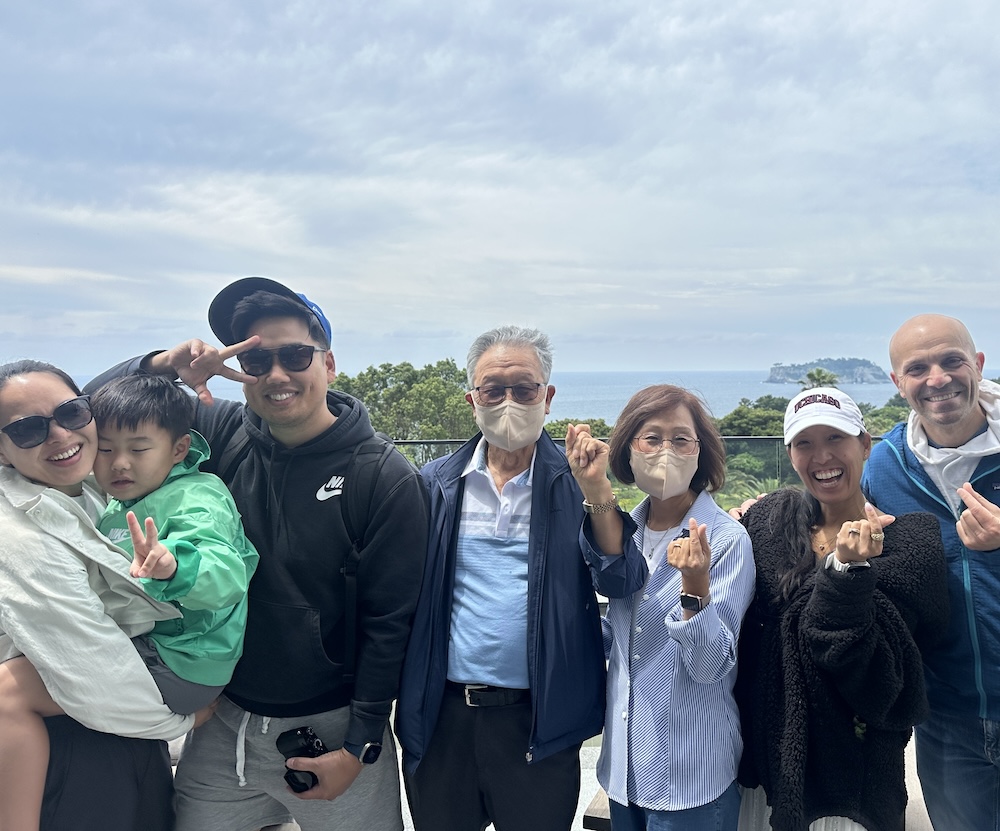
The Podcast is Back!
Listen to this week’s newsletter below, on Spotify, Apple, or wherever you get your podcasts!


Intro: Omma, please take off your glasses!
I am currently writing this with only 3 hours of sleep. After four straight nights of solid, melatonin aided slumber, I was confident my body’s normal circadian rhythm had been restored and that I could skip the two vegan gummies I’d been popping before bed every night since getting home from Korea.
I was wrong.
I woke up at exactly 1:37 am, so wide awake, I managed to fit in two full episodes of My Lovely Runner, finish a crossword puzzle, determine that our AC was broken, catch up on emails, and plan the day’s events (including dinner) all before 5 a.m.
I also devoted a fair amount of this morning’s sleepless “me time” to deciding what, exactly, I would share with you from this most recent visit to “the homeland.” My last visit to Korea (in 2019) was planned around a specific purpose: collect material for my cookbook. As a result, the first 48 hours of our trip was studded with gorgeous photographs from both my parents’ childhood villages, unexpected encounters with distant and not-so-distant relatives, and even a chat with the only living member of the family that took my mother in as a refugee when she escaped North Korea. Much of this is already documented in my first book and my hope is that even more of it will make it into my forthcoming book (yes, my next cookbook is slated to come out in Fall 2025!).
The stated purpose of this trip to Korea was a bit more generalized: enjoy time with family in celebration of my father’s 80th birth-year. Accordingly, much of our travel was composed of things that were lots of fun for me, but perhaps not as “shareworthy” for you–diving for neon orange styrofoam sharks with my nephew in the hotel swimming pools, introducing my father to the made-to-order pancake station at our hotel’s epic breakfast buffet, watching my mother blush like a teenager as she shimmied into a lacy wedding gown for our family photo shoot.
Ah yes. The photo shoot.
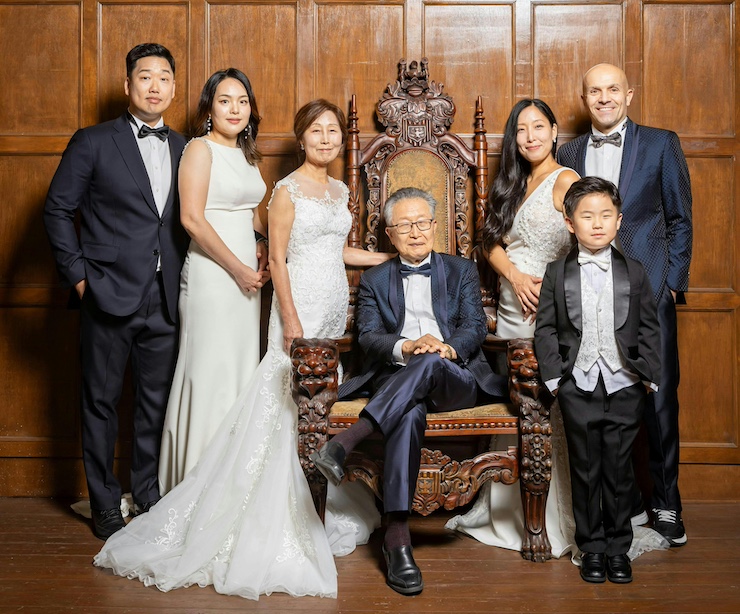
I’d specifically requested that we plan a family photo shoot, Korean style. What do I mean by this? In Korea, when you get married, you don’t just hire a photographer for your wedding day. You schedule a whole separate day for you and your partner (and, if you want, families) to head into a professional photo studio, where you’ll get your hair and makeup done, pick out your outfits (you can choose several), and get photographed in numerous staged settings throughout the building (e.g., a traditional Korean style home or “hanok,” a beautiful flower-filled path, a 1920-esque drawing room, an abandoned railroad by a Western-themed saloon, etc.). While this activity is typically reserved for the wedding day, it can also be arranged for any old day.
My parents had a spartan wedding in Korea, back in 1972, with no elaborate photo shoots or even much discernible romance. Their union was a product of something just short of an arranged marriage and families on both sides were poor. There wasn’t enough money for designer wedding gowns, tuxedos, ornate bouquets, and full-day photo shoots. My mom rented a white dress with a veil. My father wore his best suit–the one he wore to work. I have only a handful of black and white photos from this blessed day, and tellingly, nobody is smiling in any of them. Quite frankly, I’ve seen more emotion at an M&A closing than evidenced in those photos.
While I’d walked into this photo shoot wanting some nice photos of the entire family, the photographer assumed we were there to honor my parents and their near-50-year union. Anthony and I, along with my brother and his family, would merely be accessories to the main couple. As I watched the soft light in Omma’s eyes gleam through her glasses while she fingered the pearl beading of one couture gown after another, I thought, “Sure. Let’s go with that. Why not?”
But first:
“Omma. Please take off your glasses!!”
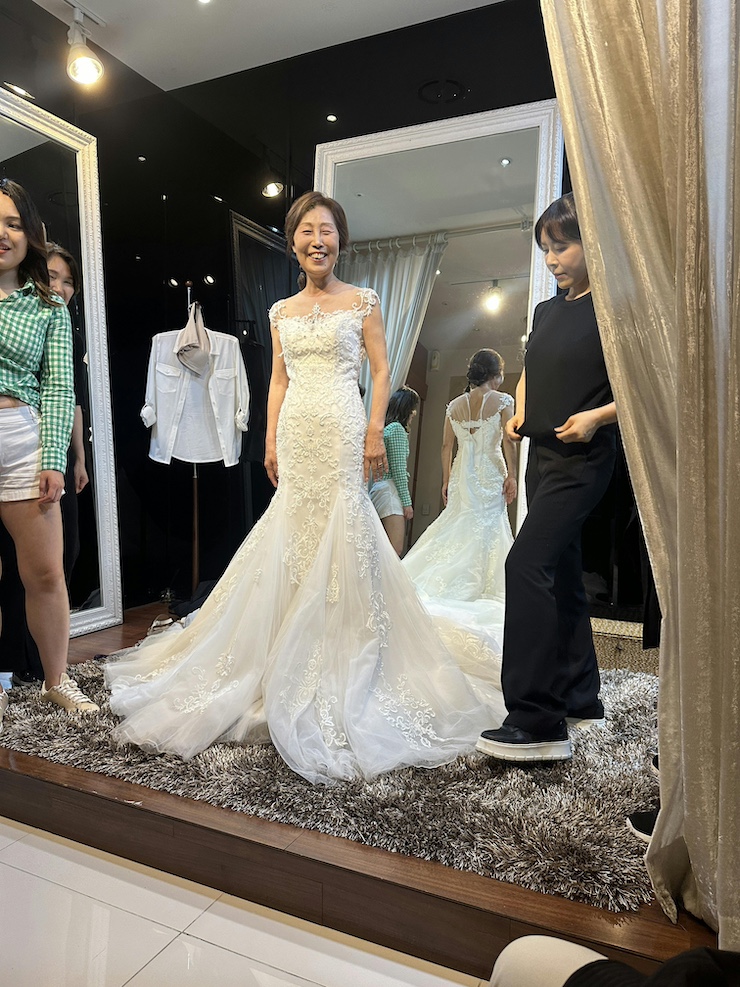
The photo shoot was actually on our last full day in Korea. My family and I spent my first few days in Korea in Jeju-do. While I thought about trying to fit in everything from our trip in one massive newsletter, I quickly realized I couldn’t really do the trip justice without an overly-long intrusion on your inbox. As such, I will share my thoughts on Korea 2024 in parts, with the first of those parts below. Don’t worry–I’ll fill you in on the massive 8-hour family photo shoot, my first Korean wedding ceremony, and my father’s surprising and emotional reaction to the video presentation you all watched already in a subsequent installment!
Otherwise, without further ado…
Jeju Arrival.
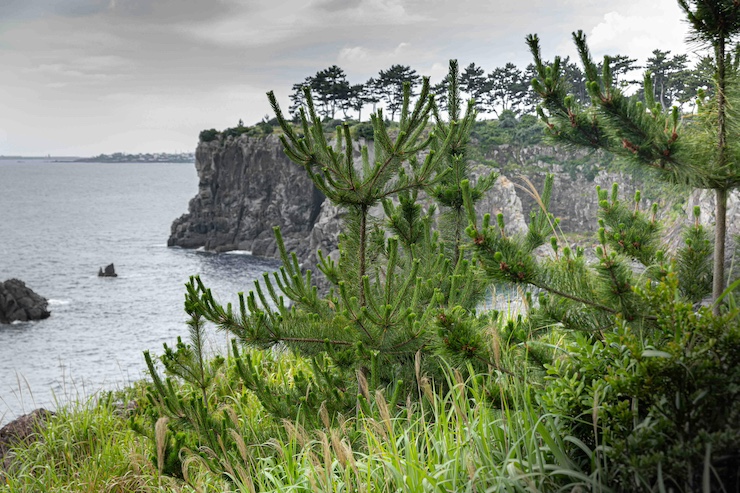
I did not realize how much my parents–especially my father–had aged in just the past couple of years until we landed in Jejudo, the famed island off the Southernmost tip of the peninsula. My parents had been to Jeju together in the 90s. My sister-in-law, Young Jung, who’d lived in Korea for most of her life, had also been there when she was a child. For the rest of us, it would be our first visit to the home of the tangerine.
Jeju, the largest of Korea’s islands, erupted out of the sea and into existence nearly 2 million years ago. I heard that it was once called “Quelpart,” possibly because when European explorers first arrived on the island and asked what the land was called, natives pointed to a field of tangerine trees, which, in Korean, is called “kyul-paht.” Composed primarily of lava and basalt, I could see through the windows of the small jet soaring towards the island’s airport that much of the lush green mountain sides were dotted with black rocks or mottled grey stone.
When we landed, my father got to his feet instantly and unlatched the overhead bin before swinging out my mother’s roller board. We were towards the back of the plane, but my father promptly pressed forward as passengers filed out. I was right behind him. As we marched up the slight incline of the jet bridge, I noticed how much he bent forward beneath the weight of a small backpack strapped to his body, how his trousers hung so loosely off his waist, the way he shuffled towards the parting doors of the gate ahead.
It struck me, right in that moment, that just two years earlier, when we moved into our home in Los Angeles, Anthony took some video of Daddy swaggering out of a Domino’s pizza with a 2-liter Coca-Cola in one hand and a large pizza tucked like a newspaper between his arm and torso. I remember thinking then that my father, at 78 years old, his back straight and his shirt tucked in, looked as fit and trim as a man in his 40s. Did turning 80 automatically transform him into a fragile old man? What else lay beyond the end of this jet bridge?
Omma, too, was showing signs that the years, while being kind to her face (which, according to an old high school friend who dropped by our hotel in Seoul, looked “exactly the same”), were still taking their toll. The memory lapses that provided ample fodder for jokes and good-natured ribbing were now cause for slight concern. Was my mother’s excessive dependence on her phone, her inability to remember that she had a membership with American Airlines (she’d bugged me nearly to death about setting that up for her just two years ago), and the fact that she admitted having trouble getting from one place to another in Korea without getting completely lost…. were these things “normal” or were they a sign of things I hoped would never quite arrive?
I shoved these thoughts deep down as I hustled towards the baggage carousel. On the way there, my brother rushed past me, his face as grey as the stones I’d seen scattered across Jeju. “I think I left my wallet on the plane,” he muttered, as he flew by me.
Maybe it’s just genetic.
Hallasan Mountain.
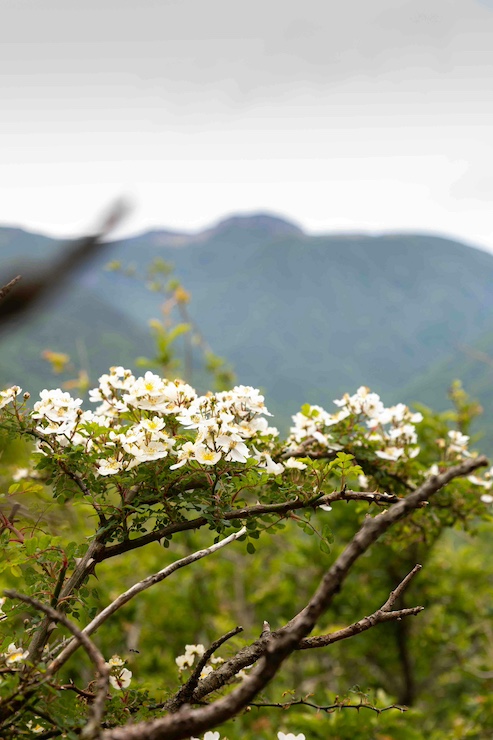
Omma did her best to quiet my concerns within hours of our arrival to Jeju. Our tour guide, Mr. Shin, picked us up in his jumbo-sized van and, after taking us to lunch (we had the best jjajangmyeon of my life at a famous Chinese eatery that had meatless/fishless black-bean noodles on its menu), dropped us off at the foot of one of the smaller peaks of Hallasan–Korea’s tallest mountain. According to Mr. Shin, “Hallas” refers to “pulling in the galaxy,” as in, the volcano stands so tall, on its peak, you feel you can literally corral the sun, moon, and stars into your body. Hallasan makes up the majority of the island of Jeju, which is why it’s often said that “Hallasan is Jeju and Jeju is Hallasan.”
My mother was anxious to visit the famous volcano, and though typically wreathed in mist, that day, Hallas was visible from even the Chinese restaurant. It was the perfect day for us to climb to the top–at least the top of one of the more modest peaks. Mr. Shin dropped us off at the mouth of the Eoseungsaengak Trail, which totaled about 1.2 miles from the parking lot to the top, with an elevation of 3,835 feet. Our trusty guide assured us it could be completed, round trip, in under 90 minutes. I was still wearing the white, lacy dress I’d picked out at the hotel in Seoul that morning before hopping on our flight (not realizing I wouldn’t have a chance to change before climbing up a mountain), but luckily, I’d had enough sense to put on my running shoes.
My father stayed behind (Mr. Shin introduced him to a grassy knoll adjacent to the parking lot where Daddy could get his “exercise”), but Omma came with me, Anthony, and my brother. The trail was remarkably steep and uneven for the first quarter mile and I was focused almost entirely on not falling on my face and cracking my skull open or dropping the super expensive camera I’d insisted on bringing with me. It was thus a little challenging to appreciate the greenery around me, though it was practically buzzing with birds and insects and small critters. About 10 minutes in, Omma panted, “I’m going to rest for a few minutes. You go ahead. I’ll probably turn around and head back to the parking lot soon.”
It took about half an hour of near ceaseless climbing, but we finally arrived at a small clearing. Not quite the peak, yet, but close enough to it that we emerged from the lush foliage, ruddy cheeked and slick, but with clear eyes peering out at a verandah of green treetops, broken only by clusters of small white blossoms. In the distance, we spied the older and larger siblings of our small mountaintop, covered in what looked like dense moss from so far away.
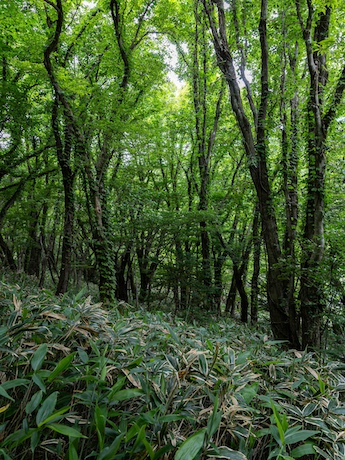
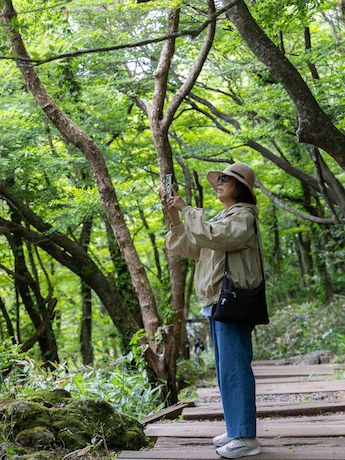
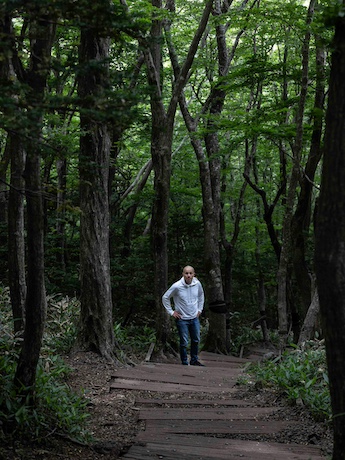
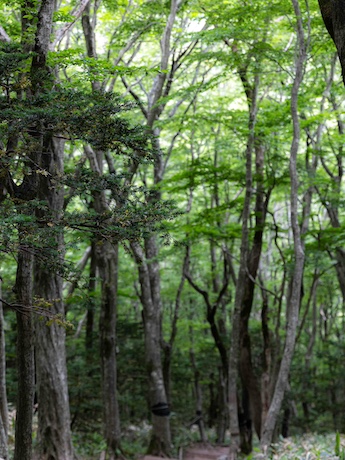
Energized by the mountain’s unexpected gift, all three of us–me, Anthony, my brother–hurried to the top, where Hallas rewarded us with sweeping views of her undulating emerald body, an aged dragon sleeping peacefully beneath a blanket of trees. The sky was so clear we could see straight past the homes, buildings, and cityscape that dotted the island and beyond the shore into the shimmering grey facade of the sea. It was daytime, so there were no stars or moon for me to collect, but I took something of Jeju into my heart that day, some secret that Hallas imparted to me with as much slyness as a young girl fluttering away from home to meet her lover at twilight, a secret I could only begin to feel the shape of, even without knowing its name.
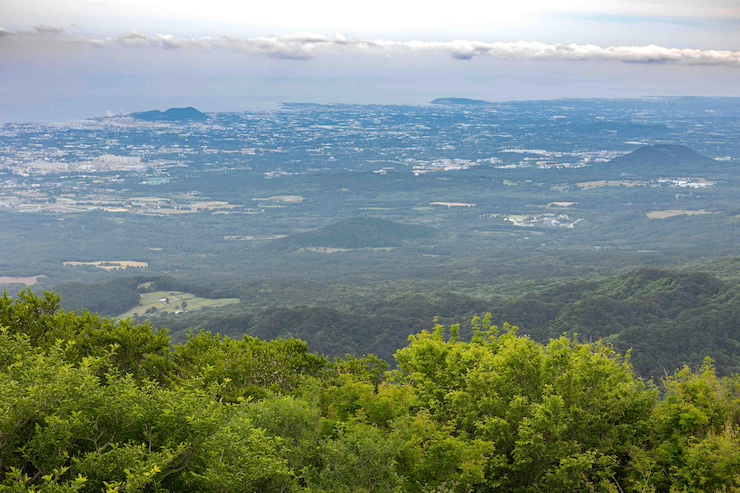
As we headed back down, Omma’s hat peeked through the branches. “I’m still here!” she called up. Yes, my 75-year-old mother who had trouble finding the noodle restaurant 2 blocks from our hotel in Seoul, managed to climb nearly a mile of the rugged trail, by herself! We doubled back with her to the top, congratulating her for her fitness, warning her of the sore quads in her future. As I watched her take more photos and video than anyone other than a mother could possibly need, I wondered what secrets the dreaming volcano had shared with her, what dreams had chased Omma’s heart straight into the mountain’s crown.
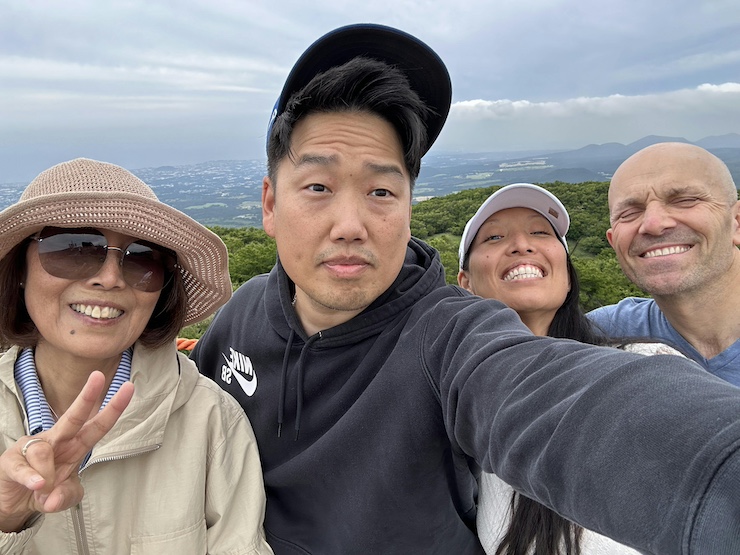
Honestly, I was in no position to judge my mother’s absentmindedness. I had several screw ups to speak of that could have easily derailed our trip. I’d failed to include our full middle names on the boarding passes to Jeju (in Korea, middle names are not optional), which meant Anthony and I had to scramble around for 30 minutes at the airport getting our tickets reissued just in time to make our flight. I booked the Jeju tour on the wrong day (i.e., the day we arrived)–something I wouldn’t have even realized had I not received a “SEE YOU SOON” notification from Viator while on the tarmac to Jeju that morning (hence me climbing up Korea’s tallest mountain in a DRESS). But quite possibly the most frustrating blunder was, unsurprisingly, related to our [vegan] food.
Loving Hut.
Of all the restaurants I was eager to sample, Jeju’s Loving Hut–the all-vegan franchise–was the only one I’d had on my dance card as a “must try.” Putting to one side its, uh, interesting origin story, the Loving Hut franchise is unique because of how much latitude is granted each franchisor. So long as it’s vegan, the menu of each restaurant can be tailored to the franchisor’s taste or background. In this case, Jeju’s Loving Hut offered a bevy of plant-based Korean food endemic to the island.
So, on our second night in Jeju, we called an Uber (yes, Uber works in Korea–even in Jeju!) to take us the full 35 minute drive to Loving Hut. About 10 minutes in, I Googled Loving Hut to confirm its hours–earlier in the day, Happy Cow had indicated it closed at 7:30 pm and we would arrive just before 7. Imagine my surprise–I mean horror–when Google had the word “Closed” in red letters next to “Hours.” But how could that be? I thought to myself. I’d checked the hours on Happy Cow before we’d left and confirmed they were open until 7:30! Surely, this Google thing was wrong! I switched over to Naver, Korea’s version of Google, and typed in “Loving Hut” in Korean, where the news was even worse: the restaurant had closed hours earlier. It didn’t have a dinner service.
Panic ensued. We were already 10 minutes into a 35 minute drive to the restaurant. There was absolutely NO WAY IN ALL HELLS I was going to ask the elderly and taciturn Korean ahjuhshee to turn around and cancel our fare. By this time, the internal flagellation was severe enough to leave visible marks. How could I have been so careless? How could I have been so STUPID? How could I possibly allow us to get into a 35 minute cab ride without TRIPLE CHECKING the hours??
It was not without some trepidation that I broke the news to Anthony, who asked me a million times if I was sure, to which I replied a million times that this was what was reported by Google and Naver. He suggested I call the restaurant, so I dialed the number on Google and it went to nothing, of course. Notably, at no point did Anthony suggest we cancel the Uber and turn around. Instead, he quietly suggested, “We’ll get out, look for something else, and get an Uber back to the hotel.” I frantically looked up every possible restaurant nearby, punching all the Korean letters my father taught me when I was 4 years old into Naver, and found a total of NOTHING–like this place was in the middle of nowhere. And it was going to be closed when we got there.
I had to call it what it was: this whole trip was turning into a BIG failure.
But in my head, I prayed for a miracle, a straight up, honest-to-goodness miracle: please just let it be open please let it be open please please please let it be open!!! But even as this prayer ran like the final spin cycle of a laundry machine round and around in my brain, I knew the restaurant would be closed, we’d find nowhere else to eat, and no Uber would pick up a couple of obvious foreigners off the side of the road. In short, the night would surely end in disaster.
As the minutes ticked by and sweat began to trickle down my back, I scanned the streets for anything that even resembled a restaurant. Eventually, our cabbie drove past a small, squat looking building that did, indeed, resemble a very nice “hut.” He drove too quickly for me to tell whether the lights were on, whether any silhouetted figures moved beyond the windows. He did a U-turn and pulled up right to the front of Loving Hut and… be still my heart…
A warm, yellow light spilled out of the yawning windows of the wooden edifice, its facade so white it gleamed in the soft twilight. A wrought iron gate with the sign “Loving Hut” swung lazily, bearing hours that clearly read: 11 am to 4:30 pm. It should be closed closed closed but we walked through the gate anyway and peered into the mesh screen door to see two women inside. One was clearly cooking, while the other stood by the counter. The latter waved us in.
HUZZAH!!
The restaurant itself was much smaller than I’d imagined. It was about the size of our family room at home and housed one larger table (that sat about 6 people) and two smaller tables (for 4). It was tucked into the bottom of a small hill, about 20 yards from the road and cordoned off by the aforementioned fence and gate. There was a small outdoor area with a picnic table atop a sturdily built patio.
From the moment we got out of our taxi (and our uber driver wished us a good meal), we heard a LOT OF BARKING. Whoever owned the home just up the hill had a lot of dogs!
The woman behind the counter was busy cooking and she reminded me so much of my favorite character in Our Blues, only she was younger and had a nicer complexion. She was wearing a bandana over her hair and a Korean style apron (or ahpcheemah), with loose fitting slacks and crocs. The menu had only 5 items, as far as I could tell. I wanted to try them all! But we settled on 3: jjajangmyeon, katsu, and jjigae. Upon hearing our order, the cook said, “Three? They want all three??” And for a second I thought about paring our order down to two, but then thought, “When am I ever going to be in this situation again? Never!!” and stuck to my guns!
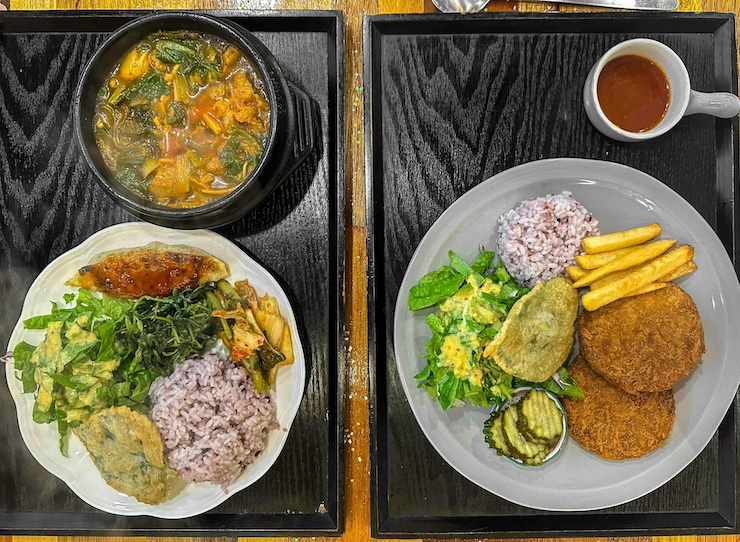
Our food arrived about 15 minutes later and wow. Now I understand why the cook was like, “Are you sure…?” Each entree came with a bunch of banchan and I could not WAIT to eat!! All the food was so good, but the standout for me was that jjigae. It reminded me so much of gukbap and I really wanted to ask the cook what her secret was. While finishing up, we noticed a couple of cats wandering through a tear in one of the mesh screen doors.
When I went up to pay, the owner smiled and said in Korean, “You know, you were so lucky! We weren’t supposed to be open today but that woman you saw earlier, she’d made a reservation with her friend so I stayed open for her!”
Man! Miracles indeed!!
Afterwards, we tried to hail a cab to no avail. Uber was not working and I even tried calling the hotel. No dice. We finally went back into the restaurant and I employed my broke-ass Korean to explain the situation to the owner lady. She instantly got on her phone, switched into Jeju dialect, and had a cab on its way. She insisted on waiting outside with us so we made as much light conversation as my poor Korean could handle. I learned that the house with all the dogs was hers, that she had 9 dogs and several cats. She said they were making her crazy/miserable, but she said so with a smile that spoke of a devotion as strong as Hallas. A few minutes later, a couple dogs escaped and we got to say hi to them.
She tucked us into our cab like she was tucking us into bed. The taxi sped back to our hotel. Anthony and I gazed out at the blue melancholy stealing over the island like a ghost, our hearts and bellies full of miracles.
귤 Gyul: 5 for $10.
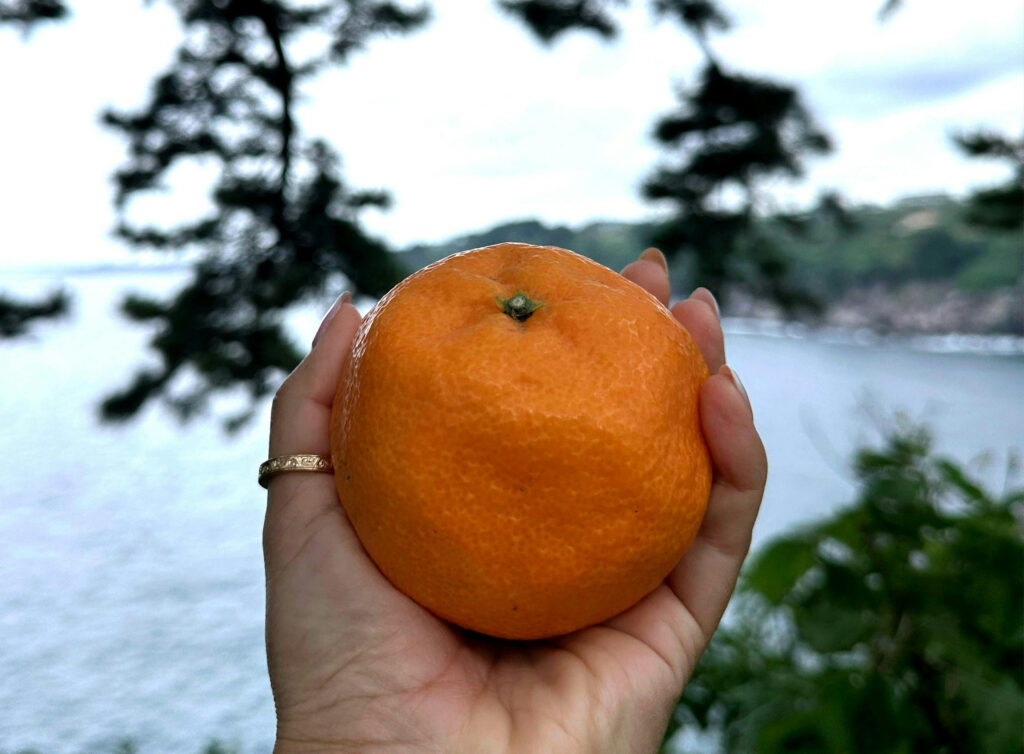
“5 for $10,” a handwritten sign teetered precariously off the edge of a table laden with dozens and dozens of red, plastic baskets containing the largest tangerines I’d ever seen in my entire life. On the way back to our hotel after a long walk, Anthony and I stumbled upon a teensy market that looked like a cross between a Manhattan magazine stand and a farmer’s market fruit stall. In addition to the tangerines, a corrugated A-frame advertised iced Americano’s and citrus granitas. A somewhat sad looking attempt at “street food”–one extremely dried out version of the viral “tornado potato” rested on an old warmer covered by a plastic lid–buzzed at us, as I walked along a line of faded sun hats, the kind that Korean people never left home without, which connected a small selection of bottled drinks and the cherry tangerine table.
$2 per tangerine was testing the boundaries of my willingness to get ripped off as a silly American tourist, but as I studied the array of baskets, a woman emerged from behind a counter stacked with touristy “Jeju!” trinkets and assured us, “The tangerines are really good. Very sweet,” in Korean. “How many do you want?” I didn’t answer immediately and she came over to stand next to me and repeated, “These are really good right now. 10 for $20.” I caved: “We’ll just take 5 for $10.” Without a word, she grabbed a basket and carefully placed each of the most-expensive-tangerines-I’d-ever-purchased-in-my-life into a small, black plastic bag.
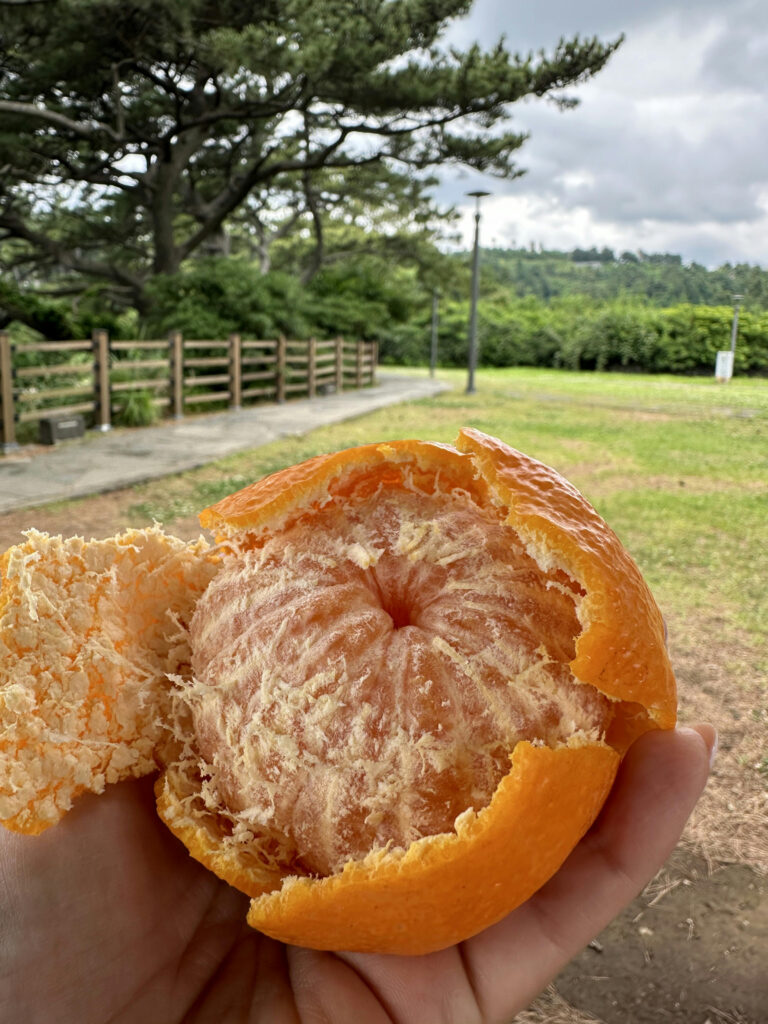
We walked further back down the trail until we came upon a park full of those Korean style outdoor tables or pyongsang–the kind often found inside the gated courtyard of a traditional Korean home, bearing hahlmuhnees, barefoot and cross-legged, as they snip the tails off a mountain of bean sprouts or peel a lifetime supply of garlic cloves, while grousing with neighbors over their useless middle sons. Indeed, we found a couple of hahlmuhnees covered in floral printed long-sleeved shirts, clownishly large visors, sitting on a beautifully carved pyongsang, their shoes sitting neatly beneath their cross-legged forms, as they chatted (cannot confirm whether the aforementioned forlorn middle-sons were of topic). We found a vacated sang and sat down. I crossed my legs and palmed a gyul. It was practically the size of a baseball.
I peeled it slowly, marveling at how easily the rind detached from the flesh. Each of the segments remained completely intact, nestled in my hand like a peony. I popped one in my mouth and good heavens. Straight up honey. I instantly regretted not getting 50 gyul for $100. I could imagine my grandmothers sitting there, making fun of how I refused to take off my shoes, ribbing me for paying a fortune for gyul like a foreigner, all the while peeling each precious tangerine, pulling apart the segments, ignoring the hands I held out to accept them and, instead, dropping them straight into my open mouth. How happy they would have been at my joy over a handful of giant tangerines.
I remembered a dream I’d had many years ago about my weh-hahlmuhnee. Hahlmuhnee was the one who taught me how to climb trees. Every fall, when we’d drive to Indiana or Michigan to go apple picking, she’d kick off her shoes and clamber up the apple trees, hollering down at us to catch the largest and sweetest apples that she’d pick at the very top. In my dream, Hahlmuhnee was climbing, her small form barely visible between the shivering boughs of some tree. I called up to her, afraid she would leave me behind,
“Hahlmuhnee!! Wait for me!! I’m here! Wait for me!”
But she slipped farther ahead until she disappeared behind an orange mist of blurring branches, leaves, and fruits. And I started to cry, the grief I’d whittled down into a nub blossoming inside my chest like the black talon of a bird.
“Hahlmuhnee!” I wept into the leaves, already dull and still where they had only just shimmered beneath my grandmother’s bare feet. She was gone.
As I readied my heart for the lonesome climb back down to earth, a voice from the clouds above echoed down the branches until it shook me from the inside out:
“I’ll be here when you are ready, Sunyoung!! I’ll be here!”
A Guide to Traveling Vegan in S. Korea.
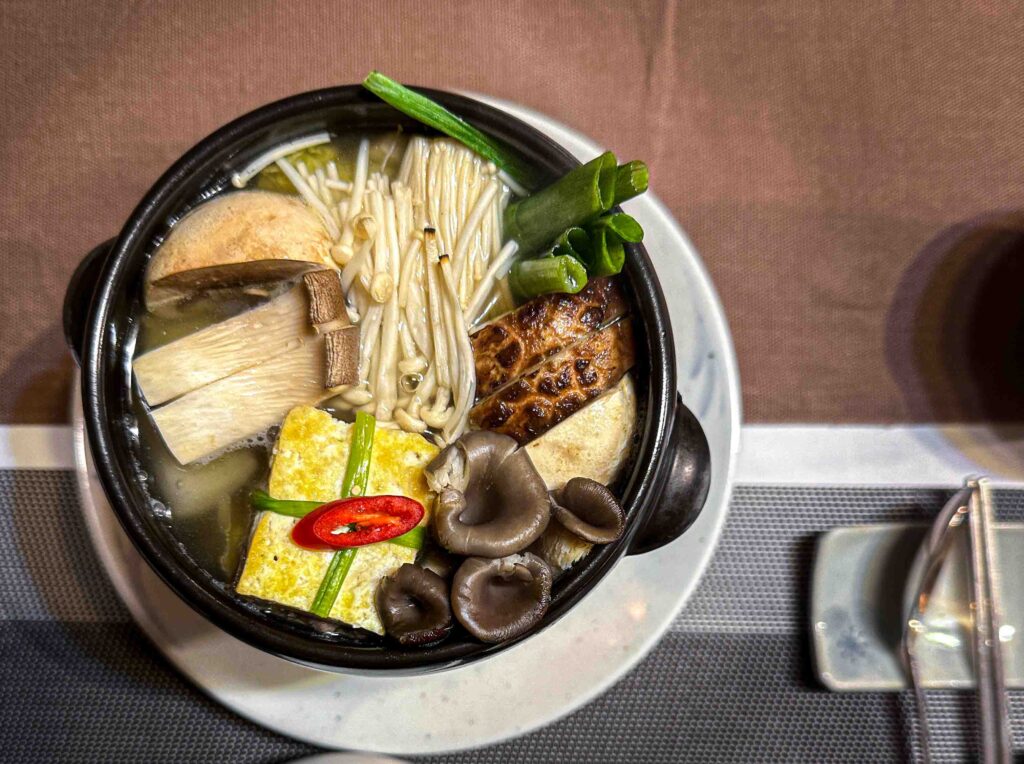
Parting Thoughts.
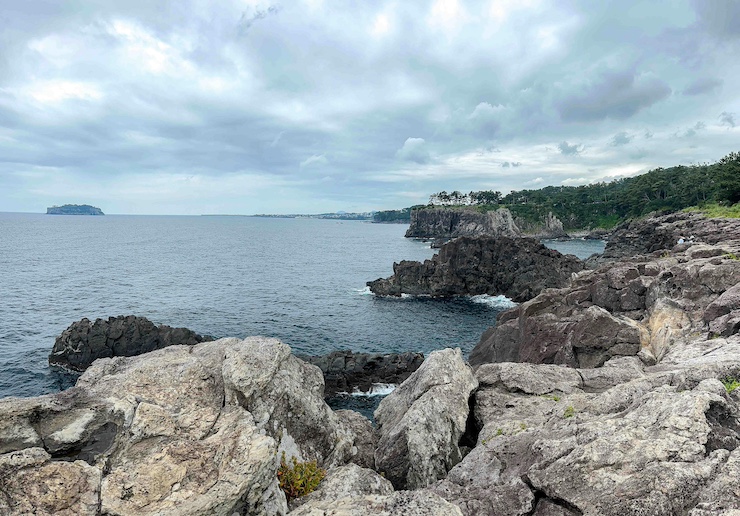
“Literally every few feet. I had to stop–just… amazed,” Anthony gushed. “Every view was somehow more incredible than the one before it.”
He’d been hyping up the winding trail, Jeju Olle Trail No. 7, that could be accessed at the foot of our resort grounds. Anthony and I got married in Rome, honeymooned in Sardegna, spent last spring at Lago di Garda in Northern Italy. We’d been gifted with truly fantastical snippets of the planet’s grandeur, the sweeping majesty of its architect’s unfathomable design. I was thus curious about what had him so impressed.
After we checked out of the hotel and dropped off our luggage at the front desk, the two of us headed out for our final exploration of the island.
And it was magical.
Clusters of thick green leaves lined the trail on both sides. To our right, we could peer through them at the sea that shimmered as if carrying diamonds in its belly. The sun had finally come out that afternoon, but only through large, sweeping clouds, so that it warmed us just enough without being overbearing. The trail was well kept with plenty of signs warning people about the hazards of slipping to their deaths. To our left, palm trees–just like the ones back home–towered over us. Every now and again, we’d arrive at a clearing and we could see the rugged cliffs of Jeju, unmoved by the churning water they grew out of as if planted there some many thousands of years ago.
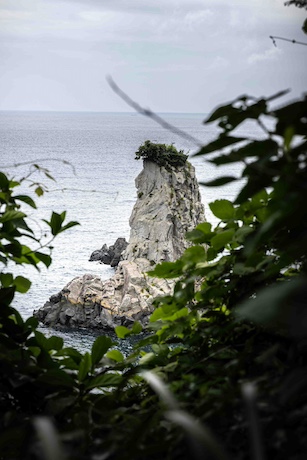
Eventually, we came upon an area that was unguarded by railing. A few folks climbed up onto the rocky crags to get as close to the edge as possible and I did the same. I could smell the algae stirring to life, the mud caked in the small holes that covered the stones we’d trekked across. I sat down on a smooth rock and gazed at the water. It was grey and green and blue, all at the same time, with murky bits of black throughout. It frothed into white as it threw itself against a sea stack right in my line of view. Everything–the smell, the sound of the waves traveling up to my spot on the stone, the hypnotic motion of the water as it blindly folded itself around the unyielding hands of an old volcano… I thought about a lot of things as I stared at the rock, the water, the outline of Jeju marked by the cliffs’ edge. Mostly, I thought of Anthony and how he’d insisted that I take this trek with him.
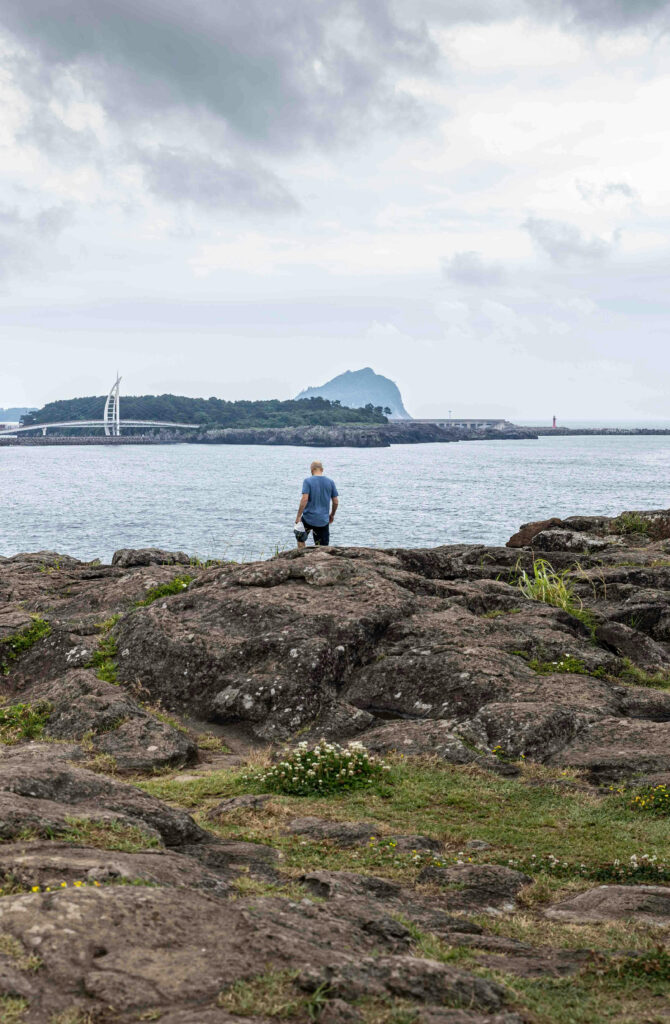
During our first trip to Rome together, some 9 years ago, we visited Hadrian’s Villa, in Tivoli, a sprawling palace that had once been home to one of the empire’s lesser known monarchs. I wrote then,
“I watched as Anthony picked through the ruins of his ancestors, wondered if he felt even a feather weight tether to his past. I thought about how I would feel clambering around the relics of my forefathers in Asia and determined that whether or not he chose to partake in some collective memory in this moment was irrelevant. The enormity of what hung in the emptiness around us obliterated any distinctions between the Italian and the Korean in us.”
Time hung there, dangling over the edge of the cliffs standing across from me, as, once more, the enormity of the secrets seething in the water beneath us eclipsed anything else.
In the end, the only thing that mattered was that the man I loved had asked me to join him here.
Wishing you all the best,
-Joanne
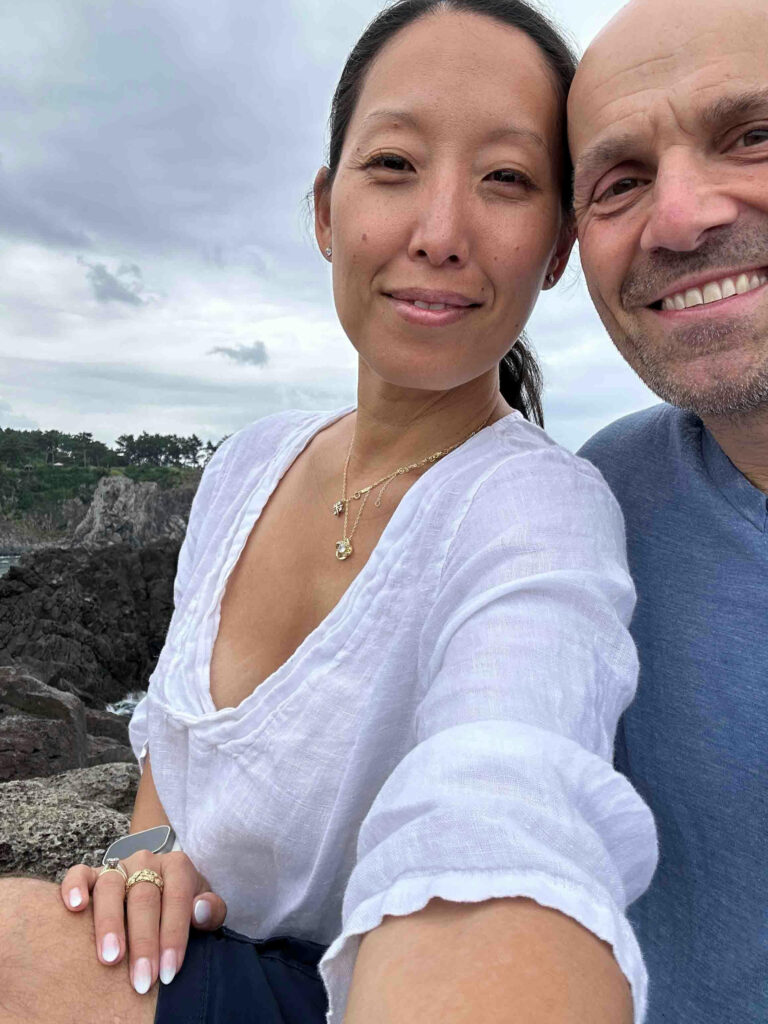
Thoughts on this week’s newsletter?


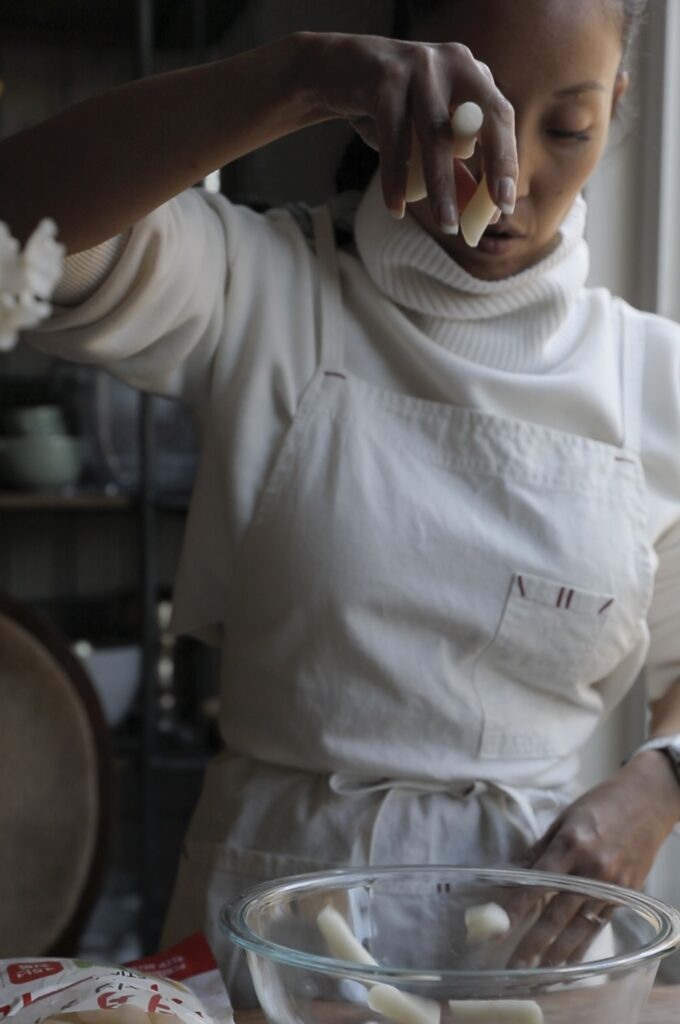
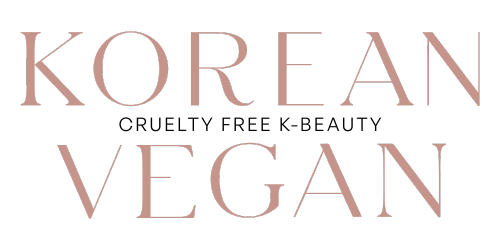


Hi Joanne, you can only imagine my delight when I saw your new podcast instalment on Spotify (which led me here)! I absolutely love your podcast and listen to your older episodes on repeat regularly. thank you for inviting us into your life story beautifully through this medium. Love your style, your voice, recipes and all things TKV.
Joanne, this writing of yours is just the most wonderful thing. I really appreciate you and your candor in sharing these bits of your life.
From another former Chicago area resident.
Thank you so much Timothy! I’m so glad you enjoy this and greetings from someone who still loves the deep dish!
As a Korean-American I love reading your stories about our culture. I am still struggling with your last piece about Korea’s obsession about weight. While I know this experience to be true, I wonder how it is any different from the US or in general world perspective on outer “beauty”. I notice you did t mention this in your stories. If you read the comments from your earlier writing, one person said she did not wish to visit Korea any longer based on your POV about weight shaming. Perhaps you could clarify your perspective on this? Your writing still leaves a bitter taste in my mouth and was quite offensive to me. I love the stories you shared from your journey and your love for your culture is obvious, however, I think your piece on Korean weight obsession is a bit unfair.